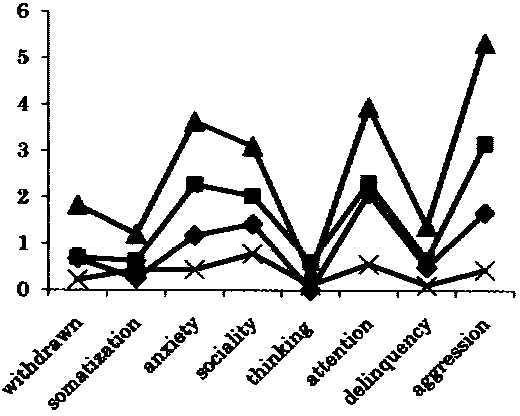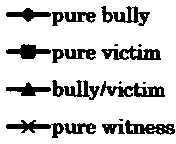No CrossRef data available.
Article contents
P01-299-Behavioral characteristics of bullies, victims and bully/victims
Published online by Cambridge University Press: 16 April 2020
Abstract
Bulling is related with emotional and behavioral problems.
To investigate the behavioral characteristics of pure bullies, pure victims, bully/victims, pure witness and children with no involvement.
Subjects were 112 children (6–13 years old). They completed questionnaire regarding acting the bully, being bullied and seeing someone bullied (Bully-victim-witness questionnaire). The questionnaire includes 5 psychological bully questions, 5 being bullied and 5 seeing bullies, respectively. Their parents completed the Child Behavior Checklist (CBCL).
112 children were divided into pure bullies (n = 12), pure victims (n = 30), bully/victims (n = 40), pure witnesses (n = 9) and children who were not involved (n = 21). The figure shows the mean scores of CBCL of pure bullies, pure victims, bully/victims and pure witnesses. The mean CBCL (withdrawal, social problems, attention and aggression) scores of bully/victims were higher than other groups.
[Figure 1]

We have to pay attention to the behavior problems of bully/victims, and the children with behavioral problems should be concerned about bullying problems.
- Type
- Research Article
- Information
- European Psychiatry , Volume 26 , Issue S2: Abstracts of the 19th European Congress of Psychiatry , March 2011 , pp. 300 - 301
- Copyright
- Copyright © European Psychiatric Association 2011



Comments
No Comments have been published for this article.